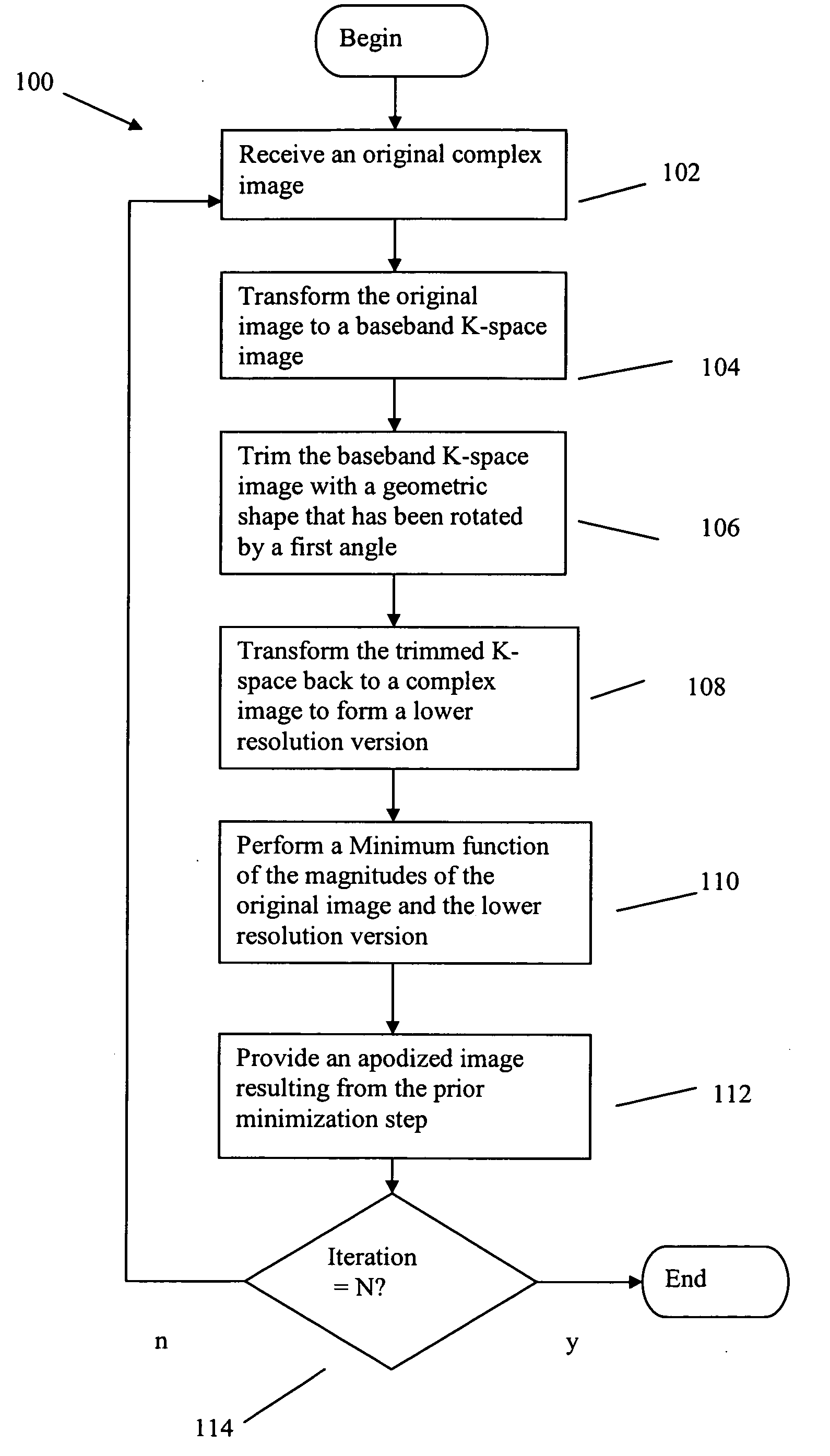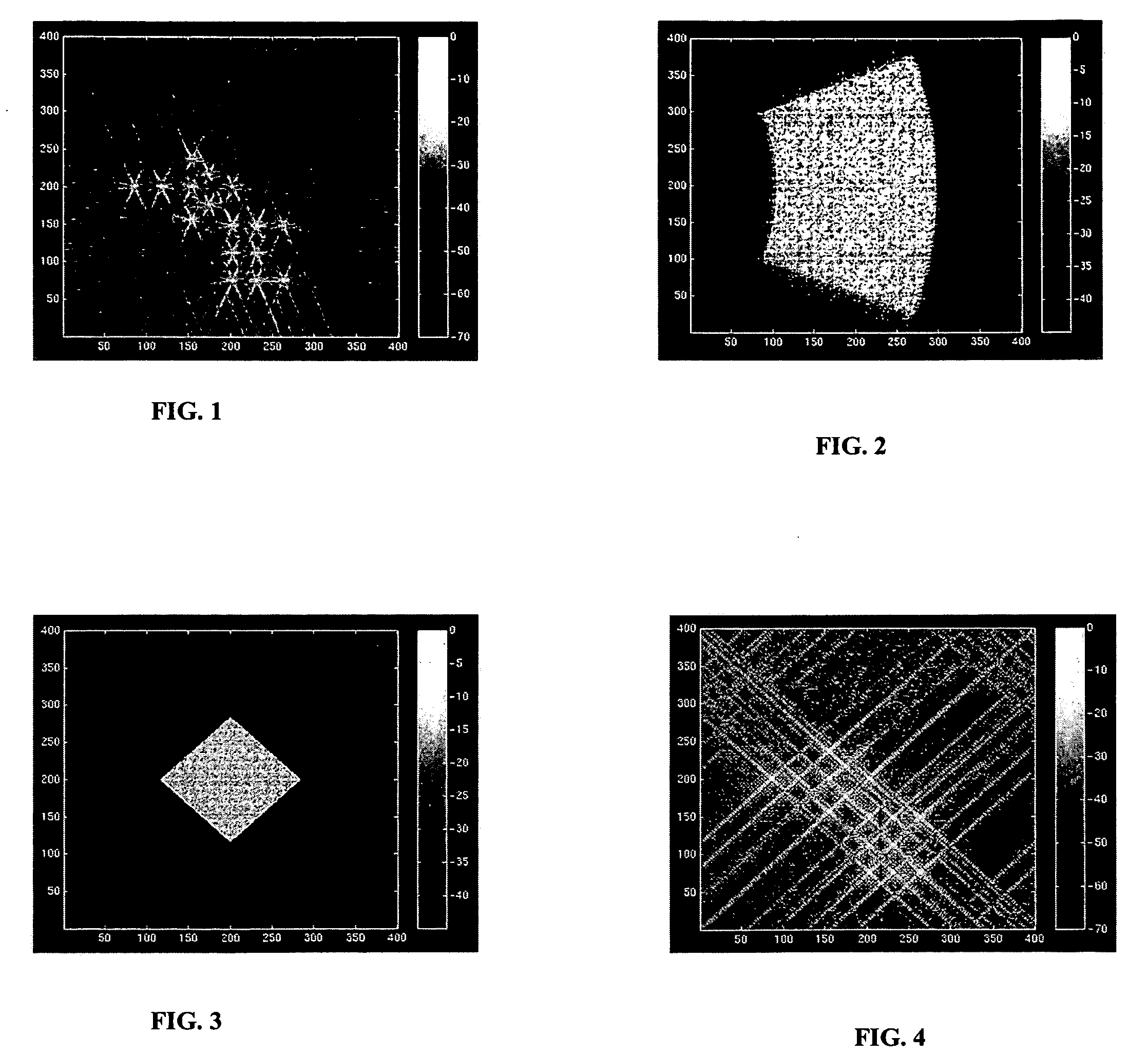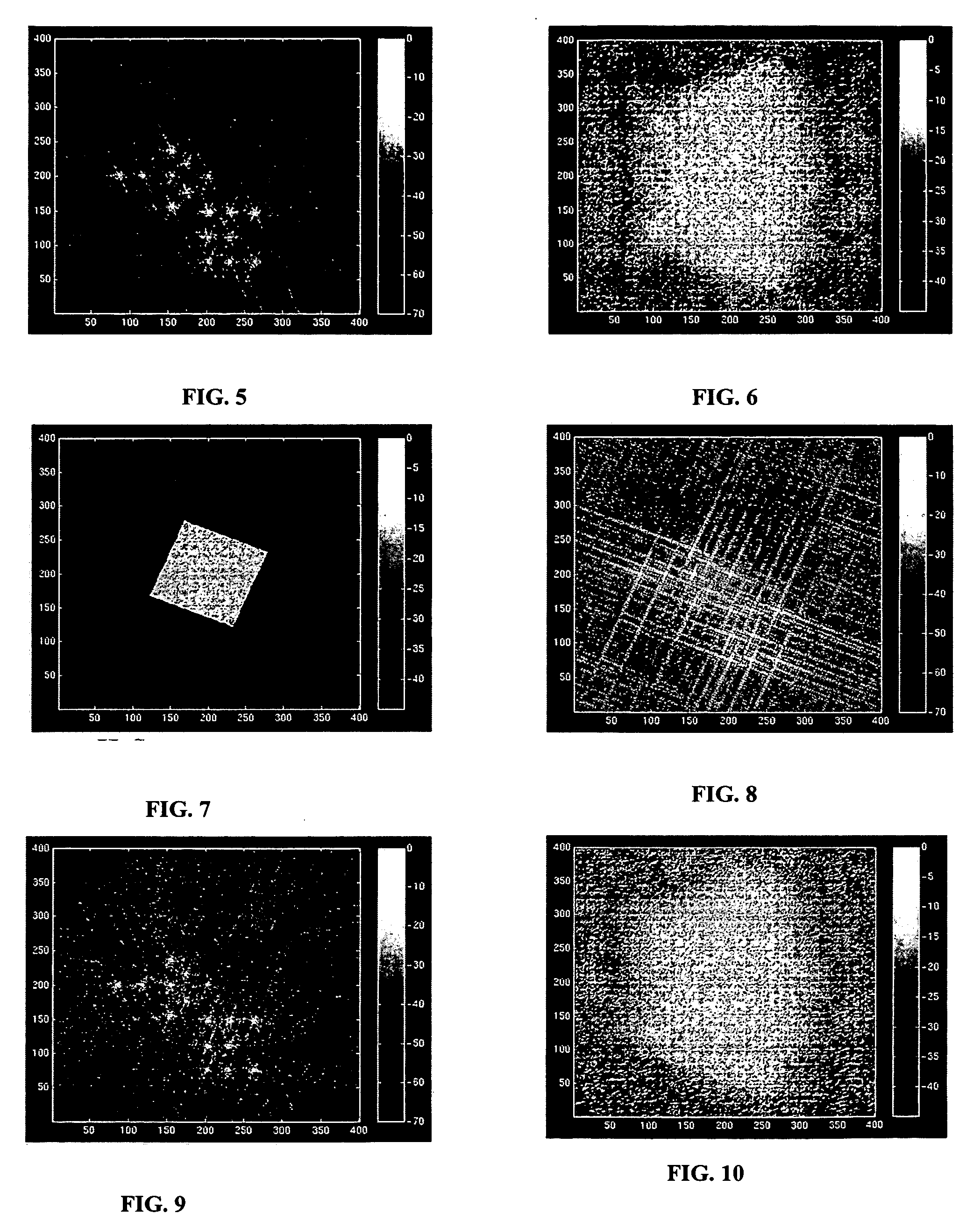System and method for geometric apodization
a geometric apodization and geometric apodization technology, applied in the field of digital signal processing, can solve the problems of affecting image analysis, sidelobes having a tendency to raise the noise floor in an image, and the removal of sidelobes from sampled images is a common problem, so as to achieve the effect of suppressing the sidelobe structur
- Summary
- Abstract
- Description
- Claims
- Application Information
AI Technical Summary
Benefits of technology
Problems solved by technology
Method used
Image
Examples
Embodiment Construction
[0026]The above problems are solved by a method and system called geometric-based apodization (GBA) which uses the concept of trimming k-space data with a varying trim shapes (i.e., geometry), varying sizes of the trim shapes, and varying orientation of the trim structure (i.e., rotation), as well as varying translated positions of the “trim” in k-space, to control the direction of the sidelobes. In the embodiment discussed herein the trimming utilized is square trimming but other shapes can also be used. In this embodiment square shape is used to remove all points outside the square.
[0027]The embodiment now discussed is a method operating on a synthesized set of point targets. This original image is approximately 0.6 meter resolution in range and azimuth in the native slant plane. The example image is a SAR (Synthetic Aperture Radar) image formed from broadside beam dragging from short range utilizing 40 degree beamwidth. The data is rendered at 0.5 meter pixel spacing in the ENU (...
PUM
 Login to View More
Login to View More Abstract
Description
Claims
Application Information
 Login to View More
Login to View More - R&D
- Intellectual Property
- Life Sciences
- Materials
- Tech Scout
- Unparalleled Data Quality
- Higher Quality Content
- 60% Fewer Hallucinations
Browse by: Latest US Patents, China's latest patents, Technical Efficacy Thesaurus, Application Domain, Technology Topic, Popular Technical Reports.
© 2025 PatSnap. All rights reserved.Legal|Privacy policy|Modern Slavery Act Transparency Statement|Sitemap|About US| Contact US: help@patsnap.com



